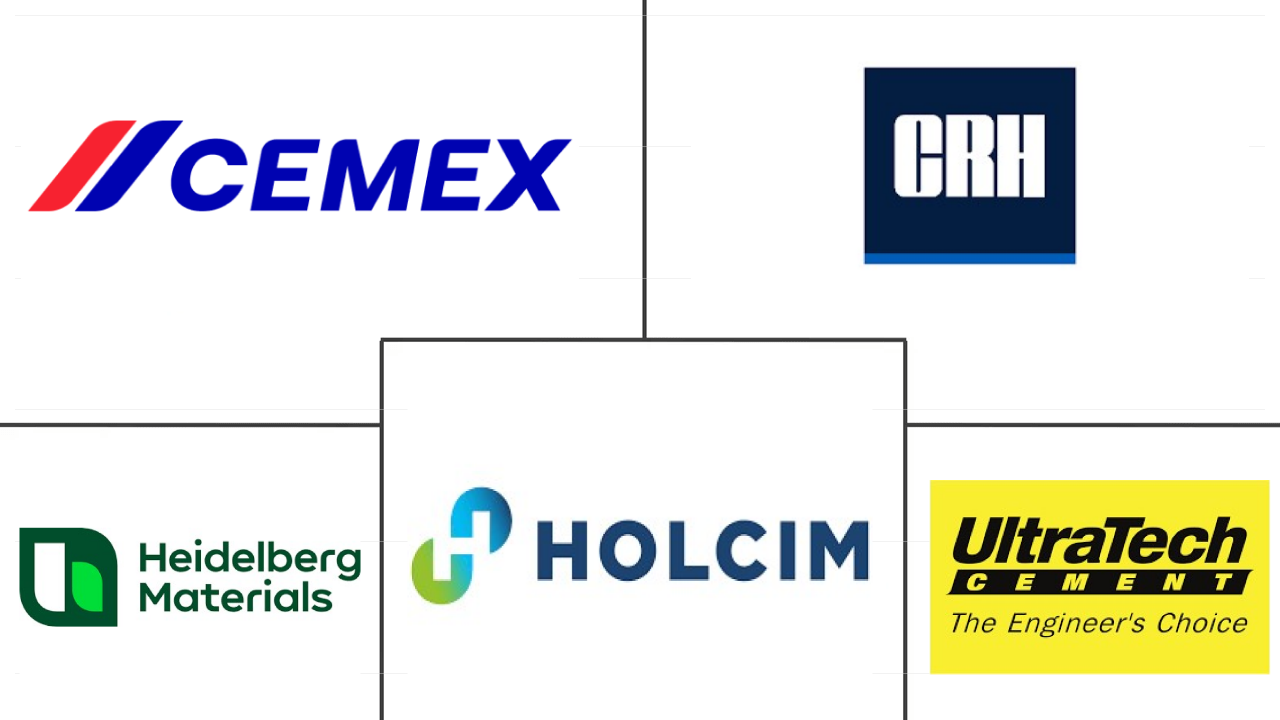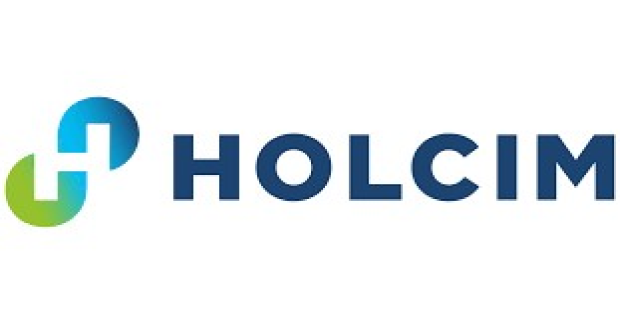Market Size of rapid strength concrete Industry
| Icons | Lable | Value |
|---|---|---|
|
|
Study Period | 2018 - 2030 |
|
|
Market Volume (2024) | 104.39 Million Cubic meters |
|
|
Market Volume (2030) | 134.72 Million Cubic meters |
|
|
Largest Share by End Use Sector | Infrastructure |
|
|
CAGR (2024 - 2030) | 4.34 % |
|
|
Largest Share by Region | Asia-Pacific |
|
|
Market Concentration | Low |
Major Players |
||

|
||
|
*Disclaimer: Major Players sorted in no particular order |
Rapid Strength Concrete Market Analysis
The Rapid Strength Concrete Market size is estimated at 104.39 million Cubic meters in 2024, and is expected to reach 134.72 million Cubic meters by 2030, growing at a CAGR of 4.34% during the forecast period (2024-2030).
104.39 Million
Market Size in 2024 (Cubic meters)
134.72 Million
Market Size in 2030 (Cubic meters)
6.67 %
CAGR (2018-2023)
4.34 %
CAGR (2024-2030)
Largest Market by End Use Sector
68.85 %
volume share, Infrastructure, 2023
Due to the escalating demand for infrastructure in developing economies coupled with increasing consumption of rapid-strength concrete in major infrastructure projects, the infrastructure sector holds the largest share.
Fastest Market by End Use Sector
6.09 %
Projected CAGR, Residential, 2024-2030
With the growing usage of rapid-strength concrete for applications such as the construction of high-rise structures for columns, shearwalls, foundations, etc., the residential sector is projected to witness the fastest growth.
Largest Market by Region
44.19 %
volume share, Asia-Pacific, 2023
Due to the growing construction industrial activity in the region coupled with the increasing demand for rapid-strength concrete in countries like China, India, Japan, and South Korea, the region has dominated the market.
Fastest Market by Region
4.66 %
Projected CAGR, Asia-Pacific, 2024-2030
Due to rising investments in infrastructure projects, government initiatives, fast-paced urbanization, and industrialization, Asia-Pacific is expected to witness the fastest growth.
Leading Company
4.78 %
market share, Holcim, 2022

Due to the strong foothold in the construction industry offering a wide range of concrete products coupled with a strong distribution channel, the company has occupied the largest share.
Global infrastructure spending is expected to reach USD 3.15 trillion by 2030, and it is likely to drive the demand for rapid-strength concrete
- In 2022, global consumption of rapid-strength concrete saw a modest increase of 0.05% from the previous year, primarily driven by heightened demand from the infrastructure construction sector. Notably, infrastructure spending worldwide rose by 2.03% in 2022 compared to the previous year. 2023 was projected to witness a significant surge in global rapid-strength concrete, with an estimated growth rate of 9.12%.
- Infrastructure emerges as the dominant end-user for rapid-strength concrete, accounting for a substantial 63.66 million cubic meters in 2023. Forecasts indicate this figure is set to climb to 90.47 million cubic meters by 2030. The escalating infrastructure spending, which is anticipated to reach a staggering USD 3.15 trillion by 2030, is poised to further bolster the rapid-strength concrete market. Notably, government-backed projects like highways, bridges, airports, and buildings are driving this demand, necessitating large volumes of top-notch concrete to meet stringent quality and timeline requirements.
- Among the sectors, residential construction is poised for the highest growth trajectory, with a projected CAGR of 6% during the forecast period. Factors such as urbanization, government initiatives, and both foreign and domestic investments are fueling the demand for housing. For instance, Germany is set to add a minimum of 4.0 thousand new housing units by 2024, while the Malaysian government has ambitious plans to construct around 500 thousand affordable housing units by 2025. Consequently, the residential sector's demand for rapid-strength concrete is expected to surge by 3.72 million cubic meters by 2030, compared to the 2023 figures.
Asia-Pacific is expected to lead the growth in demand for rapid-strength concrete globally
- The global rapid-strength concrete demand in 2022 was over 49 thousand cubic meters more compared to the previous year. However, Asia-Pacific's demand was lower by 3.2 million cubic meters in the same period. In 2023, the global demand was estimated to be 8.3 million cubic meters more than the previous year. Moreover, the most significant increase of about 1.3 million cubic meters in demand will likely occur in the Middle East & Africa.
- Asia-Pacific is the largest consumer of rapid-strength concrete in the world because it experiences the highest volume of construction projects. For instance, its infrastructure sector accounted for 42% of the world's overall infrastructure sector's demand in 2022. China is the largest consumer in the region. In 2022, it had a volume share of about 77% of the region's total demand.
- After Asia-Pacific, Europe accounts for the most demand globally due to countries such as Russia, Germany, Italy, and France, which are some of the largest economies and make extensive use of such construction materials to support their socioeconomic sustainability. The infrastructure sector generates the highest demand in the region. For instance, in 2022, the sector had a volume share of 70% of the total demand.
- Asia-Pacific is expected to be the fastest-growing consumer of rapid-strength concrete in the world, with a CAGR of 4.67% in volume during the forecast period. This is because one of the fastest growths in demand for the product is estimated from countries like Indonesia, India, Vietnam, and South Korea. For instance, the demand in Indonesia and India will likely increase at the CAGRs of 6.1% and 5.48% in volume, respectively, during the forecast period.
Rapid Strength Concrete Industry Segmentation
Commercial, Industrial and Institutional, Infrastructure, Residential are covered as segments by End Use Sector. Asia-Pacific, Europe, Middle East and Africa, North America, South America are covered as segments by Region.
- In 2022, global consumption of rapid-strength concrete saw a modest increase of 0.05% from the previous year, primarily driven by heightened demand from the infrastructure construction sector. Notably, infrastructure spending worldwide rose by 2.03% in 2022 compared to the previous year. 2023 was projected to witness a significant surge in global rapid-strength concrete, with an estimated growth rate of 9.12%.
- Infrastructure emerges as the dominant end-user for rapid-strength concrete, accounting for a substantial 63.66 million cubic meters in 2023. Forecasts indicate this figure is set to climb to 90.47 million cubic meters by 2030. The escalating infrastructure spending, which is anticipated to reach a staggering USD 3.15 trillion by 2030, is poised to further bolster the rapid-strength concrete market. Notably, government-backed projects like highways, bridges, airports, and buildings are driving this demand, necessitating large volumes of top-notch concrete to meet stringent quality and timeline requirements.
- Among the sectors, residential construction is poised for the highest growth trajectory, with a projected CAGR of 6% during the forecast period. Factors such as urbanization, government initiatives, and both foreign and domestic investments are fueling the demand for housing. For instance, Germany is set to add a minimum of 4.0 thousand new housing units by 2024, while the Malaysian government has ambitious plans to construct around 500 thousand affordable housing units by 2025. Consequently, the residential sector's demand for rapid-strength concrete is expected to surge by 3.72 million cubic meters by 2030, compared to the 2023 figures.
| End Use Sector | |
| Commercial | |
| Industrial and Institutional | |
| Infrastructure | |
| Residential |
| Region | ||||||||||||||
| ||||||||||||||
| ||||||||||||||
| ||||||||||||||
| ||||||||||||||
|
Rapid Strength Concrete Market Size Summary
The rapid strength concrete market is poised for significant growth, driven primarily by the burgeoning infrastructure sector, which remains the largest end-user. The demand for rapid strength concrete is being propelled by substantial government-backed projects such as highways, bridges, and airports, which require high-quality concrete to meet strict timelines and standards. The residential construction sector is also expected to experience robust growth, fueled by urbanization, government initiatives, and investments aimed at addressing housing shortages. This dual demand from infrastructure and residential sectors is set to enhance the market's expansion over the forecast period.
Regionally, Asia-Pacific stands out as the largest and fastest-growing consumer of rapid strength concrete, with countries like China, India, and Indonesia leading the charge due to their extensive construction activities. Europe follows, with significant demand driven by major economies such as Germany and France, which utilize these materials to support their infrastructure needs. The market is characterized by fragmentation, with key players like CEMEX, CRH, Heidelberg Materials, Holcim, and UltraTech Cement Ltd. actively expanding their operations through strategic acquisitions to strengthen their market presence. These developments underscore the dynamic nature of the rapid strength concrete market, as it adapts to the evolving demands of global construction activities.
Rapid Strength Concrete Market Size - Table of Contents
-
1. MARKET SEGMENTATION (includes market size, forecasts up to 2030 and analysis of growth prospects.)
-
1.1 End Use Sector
-
1.1.1 Commercial
-
1.1.2 Industrial and Institutional
-
1.1.3 Infrastructure
-
1.1.4 Residential
-
-
1.2 Region
-
1.2.1 Asia-Pacific
-
1.2.1.1 By Country
-
1.2.1.1.1 Australia
-
1.2.1.1.2 China
-
1.2.1.1.3 India
-
1.2.1.1.4 Indonesia
-
1.2.1.1.5 Japan
-
1.2.1.1.6 Malaysia
-
1.2.1.1.7 South Korea
-
1.2.1.1.8 Thailand
-
1.2.1.1.9 Vietnam
-
1.2.1.1.10 Rest of Asia-Pacific
-
-
-
1.2.2 Europe
-
1.2.2.1 By Country
-
1.2.2.1.1 France
-
1.2.2.1.2 Germany
-
1.2.2.1.3 Italy
-
1.2.2.1.4 Russia
-
1.2.2.1.5 Spain
-
1.2.2.1.6 United Kingdom
-
1.2.2.1.7 Rest of Europe
-
-
-
1.2.3 Middle East and Africa
-
1.2.3.1 By Country
-
1.2.3.1.1 Saudi Arabia
-
1.2.3.1.2 United Arab Emirates
-
1.2.3.1.3 Rest of Middle East and Africa
-
-
-
1.2.4 North America
-
1.2.4.1 By Country
-
1.2.4.1.1 Canada
-
1.2.4.1.2 Mexico
-
1.2.4.1.3 United States
-
-
-
1.2.5 South America
-
1.2.5.1 By Country
-
1.2.5.1.1 Argentina
-
1.2.5.1.2 Brazil
-
1.2.5.1.3 Rest of South America
-
-
-
-
Rapid Strength Concrete Market Size FAQs
What is the current Global Rapid Strength Concrete Market size?
The Global Rapid Strength Concrete Market is projected to register a CAGR of 4.34% during the forecast period (2024-2030).
Who are the key players in Global Rapid Strength Concrete Market?
CEMEX, S.A.B. de C.V., CRH, Heidelberg Materials, Holcim and UltraTech Cement Ltd. are the major companies operating in the Global Rapid Strength Concrete Market.

